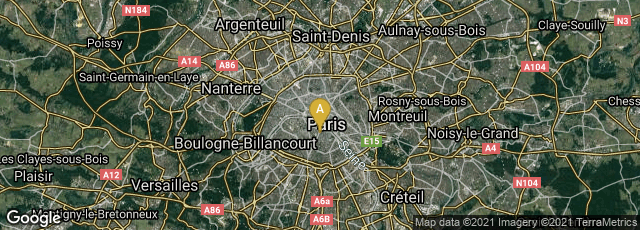

A: Paris, Île-de-France, France
"We have seen that the first catalog of the college [The Sorbonne] was classified; the text of the 1290 catalog provides a full view of this classification system. It was a system common to the intellectual world of the thirteenth century, namely, the Scriptures, glossed and postillated books; Peter Lombard's Sentences, and questions and summas on the Sentences, whole works on the saints and doctors of the Church; questions and distinctions of the master; and whole works of the ancient philosophers, followed by works outside the realm of theology and philosophy — medicine, the quadrivium, jurisprudence and perhaps vernacular writings. In this scheme, constructed for theologians, the works are arranged in descending order of their relative authority: Holy scripture, Doctors of the Church, modern masters, and ancient philosophers. This hierarchy of authority was detailed for example by St. Bonaventure: 'Sunt ergo libri sunt sacrae scripturae. . .; secundi libri sunt orignalia sanctorum, tertii, sententiae magistrorum, quarti, doctrinarum mundialium sive philosophorum.' It was only natural that this hierarchy also appeared in the organization of medieval book collections such as that at the Sorbonne.
"It has been suggested, furthermore, on the basis of the first catalog, that the books were grouped by subject and author in armaria similar to those described by Humbert of Romans ca. 1270, and that the classification of the catalog is a reflection of this arrangement. It is impossible, however, to judge on the basis of the catalog alone whether or not it reflects the physical arrrangement of the books themselves. We are fortunate in this instance to have collateral evidence which reveals the arrangement of certain books in the library just after the turn of the century.
"In 1306, Thomas Hibernicus, a fellow of the Sorbonne, unintentionally but effectively preserved a picture of the arrangement of the manuscripts of the major authors in the armaria, in the process of completing his Manipulus florum. This is a collection of extracts from the authorities grouped according to some 265 topics alphabetically arranged— abstinencia, abusio, acceptio, accidia, adiutorium, etc. Under some 265 topics the extracts appear in a set order without significant variation: quotations from Augustine, Ambrose, Jerome, Gregory, Bernard, Hilary, Chrysostom, Isidore, and so on, concluding with the ancients. At the end of the Manipulus florum Thomas has appended a bibliography of 476 works, each with incipit and explicit, compiled from the Sorbonne's manuscripts. The authors in the bibliography are presented in virtually the same order as the extracts, works of Augustine, Ambrose, Jerome, etc. The order preserved here, the order in which Thomas used the books, is apparently that of the grouping of the books in the armaria of the library. The order is virtually the same as the order of authors in the catalogs of 1290 and 1338, originalia Augustine, Ambrosii, Hieronimi, Gregorii, Bernardi, etc. The combined evidence of the 1290 catalog and the Manipulus florum certainly implies, if does not prove, that the organization of the catalog reflects the physical arrangement of the manuscripts in armaria" (Rouse & Rouse, "The Early Library of the Sorbonne," Authentic Witnesses: Approaches to Medieval Texts and Manuscripts [1991] 370-72).